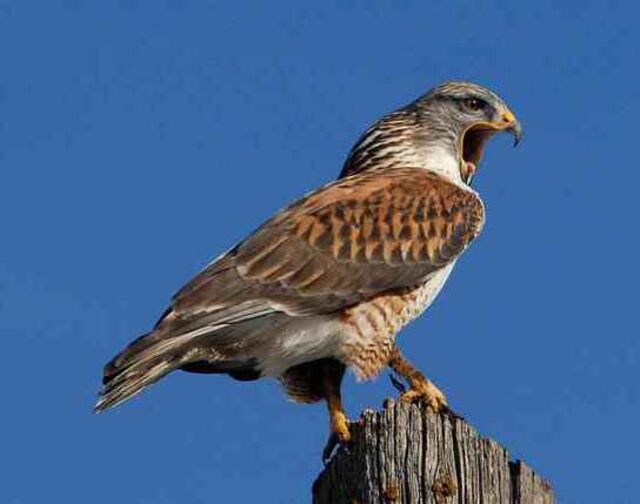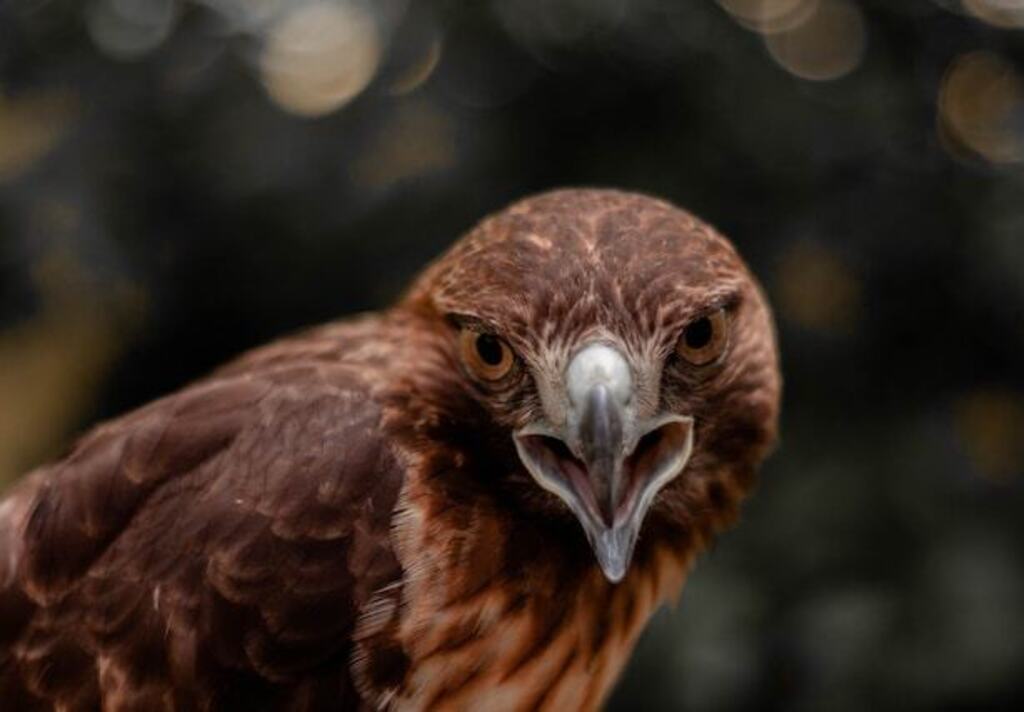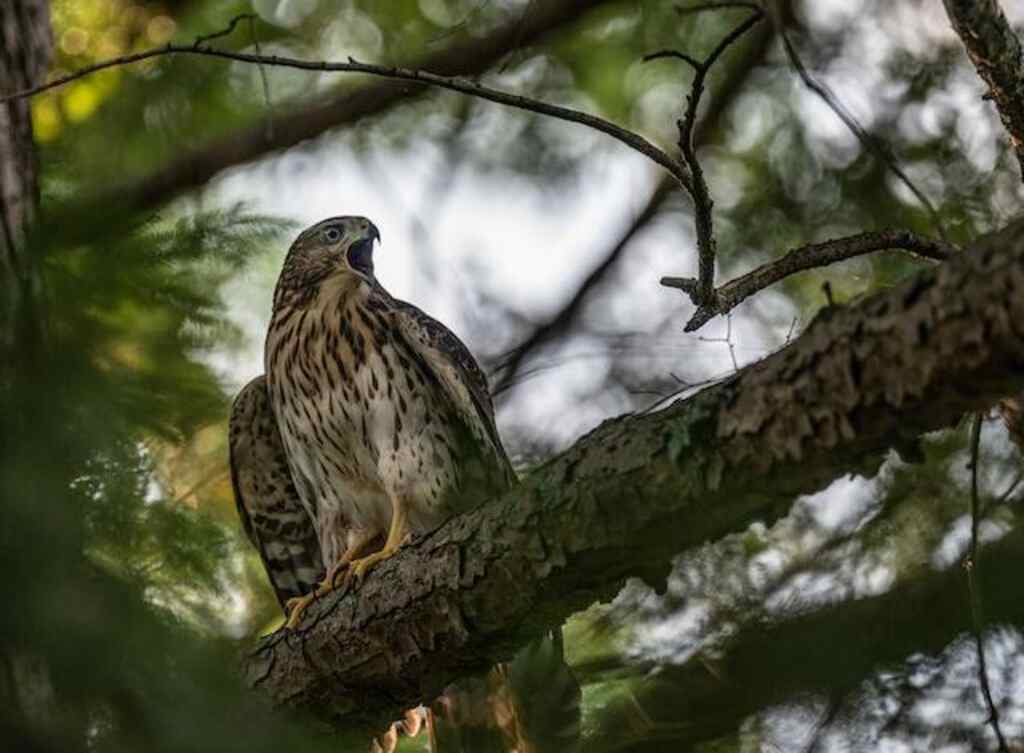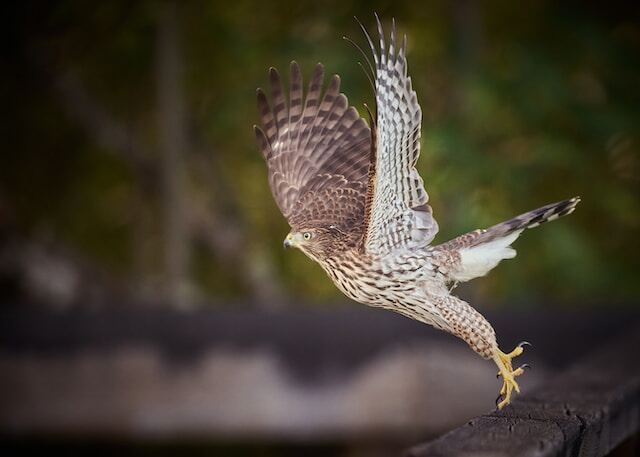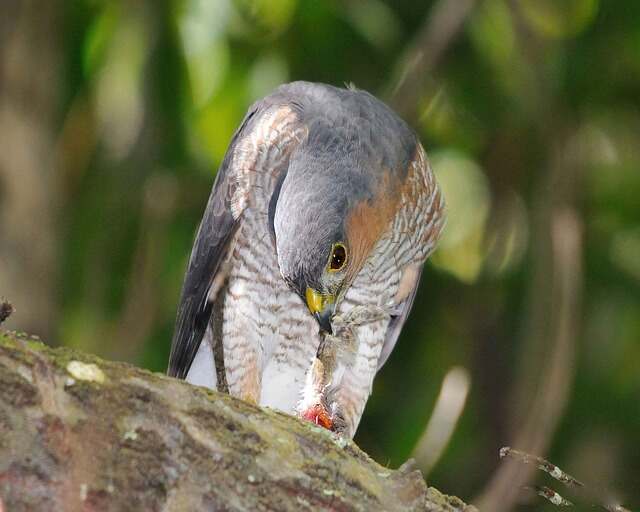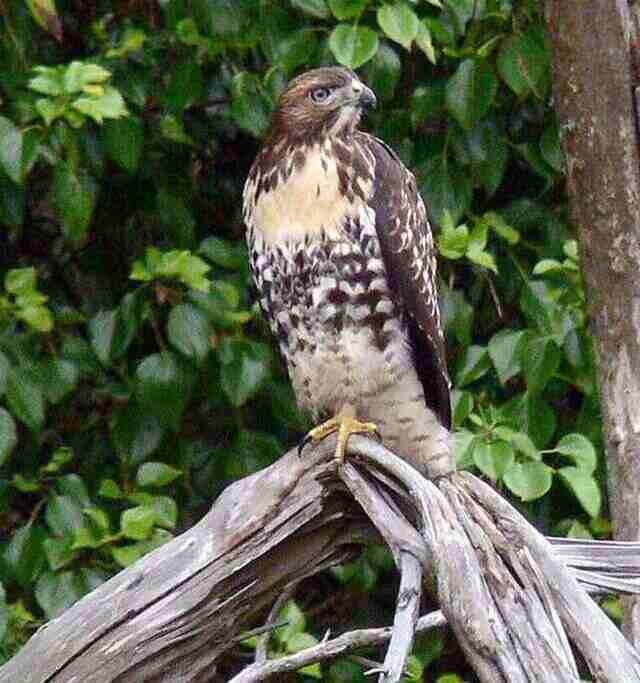How Do Hawks Defend Themselves? Brace yourself for a feathery journey into the wild world of hawk defense mechanisms!
These majestic birds are not just pretty faces with sharp talons and piercing eyesight. In this article, we unveil their secret tactics, from aerial acrobatics to beak-to-beak combat.
Get ready to be amazed and gain a whole new appreciation for these sky-bound superheroes!
So, let’s dive right in and discover the remarkable ways in which hawks protect themselves in their quest for survival.
Table of Contents
- 1 Definition of Hawks
- 2 Importance of Hawks in the Ecosystem
- 3 Overview on How Do Hawks Defend Themselves
- 4 Physical Defenses
- 5 Behavioral Defenses
- 6 Adaptations for Hunting and Defense
- 7 Unique Facts about Hawk Defense Mechanisms
- 8 Conclusion
- 9 FAQs: How Do Hawks Defend Themselves?
- 9.1 Can hawks defend themselves against predators?
- 9.2 How do hawks protect themselves during flight?
- 9.3 Do hawks use vocalization to defend themselves?
- 9.4 What role does nest protection play in hawk defense?
- 9.5 Can hawks camouflage themselves to avoid threats?
- 9.6 How do hawks use their sharp talons and beak for defense?
- 9.7 Do hawks have any physical adaptations for defense?
- 9.8 Can hawks hunt in groups for better defense?
- 9.9 How do hawks use decoy nests to deceive predators?
- 9.10 Are hawks known for any unique defense mechanisms?
- 10 Author
Definition of Hawks
Hawks typically have broad wings and strong muscles, which make them excellent hunters. They have sharp beaks that aid in catching prey and tearing flesh.
Their hind toes are longer than their front toes, which helps them grasp and hold onto their prey while they eat.
Hawks also come in a variety of colors including brown, gray, black and white.
The size of hawks varies greatly depending on the species; some can be very large with wingspans up to 4 feet long, whereas others can be quite small with wingspans as short as 16 inches.
Importance of Hawks in the Ecosystem
Hawks play an important role in maintaining ecosystems by controlling populations of smaller animals such as rodents and insects that might otherwise reproduce unchecked if left unregulated by predators like hawks.
Without these predators in place, there would be significant consequences on many other species within those ecosystems.
Aside from controlling populations of smaller animals however, hawks also serve as an integral part of food chains within ecosystems themselves which supports many other important aspects such as plant growth or water quality regulation.
Both areas where they play key roles due to their predatory nature.
Overview on How Do Hawks Defend Themselves
Hawks have evolved a number of defense mechanisms over time to protect themselves from natural predators.
These defense mechanisms vary from physical adaptations such as sharp talons and beaks, to behavioral responses like flight or vocalization, and even by adapting their hunting techniques for better defense.
While not all species of hawks use the same defense mechanisms, these adaptations have been key factors in the survival and success of hawks as a species.
The following sections will explore these defense mechanisms in greater detail to help us understand how these majestic birds protect themselves against predators while they hunt and carry out other activities.
Stay tuned for the following sections to get a more in-depth look at how hawks defend themselves and what makes them such remarkable animals!
Physical Defenses
Sharp Talons and Beak: Weapons of Mass Destruction
One of the most recognizable characteristics of hawks is their sharp talons and beaks. These tools are highly effective for hunting prey, but they also serve as a formidable defense mechanism against predators.
Hawks have powerful gripping strength in their talons, which allow them to hold onto struggling prey tightly.
This same strength can also be used to defend themselves against larger predators like eagles or owls. Additionally, hawks’ beaks are sharp and curved, perfect for tearing apart flesh or striking at an attacker.
Large Size and Wingspan: Intimidation Tactics
Hawks are known for their large size and impressive wingspan, which can span up to six feet depending on the species.
This size alone can act as a deterrent for potential predators who may view the hawk as too large or difficult to tackle.
Additionally, hawks will often spread their wings wide when defending themselves as a way to appear even larger and more intimidating.
Camouflage Feathers: Hiding in Plain Sight
While not necessarily a “physical” defense mechanism, hawks’ feathers provide excellent camouflage in their natural habitats.
Many species have speckled or striped feathers that blend seamlessly into trees or rocks where they perch while hunting or resting.
Camouflage feathers also serve the purpose of hiding vulnerable chicks from potential predators that may be prowling nearby.
Anatomy: Lightweight yet Strong
In addition to the aforementioned physical traits, hawks’ anatomy provides further advantages when it comes to defense mechanisms.
They have lightweight yet strong bones that allow them to fly with ease while conserving energy during long flights over large distances.
Their muscles are highly developed, giving them quick bursts of speed when needed in pursuit of prey or evasion from danger.
Overall, hawks have evolved to be highly efficient predators and defenders, with physical traits that are perfectly suited for their way of life.
Behavioral Defenses
Hawks are well-known for their ability to defend themselves through their physical prowess, including their sharp talons and beaks, strong wings, and sharp eyesight.
However, they also have a range of behavioral defenses that allow them to protect themselves and their young.
These include flight response, vocalization and intimidation, and nest protection.
Flight Response
One of the primary ways that hawks defend themselves is through flight. Hawks are incredibly agile fliers who can reach high speeds while flying in any direction.
When threatened by a predator or other threat, hawks will often take off into the air and use their speed and agility to evade the attacker.
In some cases, hawks may engage in aerial battles with other birds or predators.
These battles can be intense and last for several minutes as the hawks jockey for position in the sky.
Hawks may also use aerial maneuvers such as barrel rolls or sharp turns to evade an attacker or gain an advantage over prey.
Vocalization and Intimidation
In addition to flight response, hawks also use vocalization and intimidation tactics to protect themselves from attacks.
Hawks have a variety of calls that they use to communicate with others of their species. They may also use these calls to intimidate potential predators or warn other nearby hawks of danger.
Some hawk species are known for their aggressive behavior towards predators or humans who come too close to their nests.
For example, some types of hawks will dive-bomb intruders or repeatedly strike them with their talons until they retreat.
Nest Protection
One of the most important ways that hawks defend themselves is through nest protection. Hawks typically build large nests out of sticks in high places such as trees or cliffs.
These nests serve as a safe haven where they can raise their young and rest when they’re not hunting.
To protect their nests, hawks will often engage in aggressive behavior towards any potential predators or humans who come too close. This may include vocalization, dive-bombing, or even physical attacks.
Hawks are also known to be very protective of their young. They will fiercely defend their eggs and hatchlings from predators using a variety of tactics including vocalization and aerial maneuvers.
Overall, hawks have a range of behavioral defenses that allow them to protect themselves and their young from predators and other threats.
By understanding these defenses, we can gain a greater appreciation for these majestic birds and the important role they play in our ecosystem.
Adaptations for Hunting and Defense
Excellent Vision
Hawks are renowned for their excellent eyesight, which enables them to spot potential prey from high in the sky. Their eyes are large, and they have a high density of photoreceptors (cells that detect light) in their retinas.
This allows them to see fine details from a distance and pick out even camouflaged prey.
Additionally, their eyes are set on the front of their heads, giving them binocular vision that helps with depth perception.
Speed and Agility in Flight
One of the most remarkable adaptations of hawks is their speed and agility in flight. They have powerful wings that allow them to soar through the air effortlessly, using thermals to gain altitude without flapping their wings.
When they do flap, they can reach speeds of up to 120 miles per hour (193 km/h). They also have incredible maneuverability, able to make quick turns and dives while hunting or evading predators.
Hunting Techniques
Hawks use a variety of hunting techniques depending on the species and the availability of prey. Some species hunt from perches, swooping down on unsuspecting prey below.
Others hunt on the wing, patrolling open areas looking for movement. Some species hunt cooperatively with others in pairs or groups, flushing out prey from hiding places and pursuing it together.
One unique hunting technique employed by some hawks is called “still-hunting”. This involves slowly flying low over an area while scanning for prey below.
Once spotted, the hawk will hover above its target until it makes its move – either diving down to snatch its victim or pouncing on it from above.
Another interesting aspect of hawk hunting is their ability to adapt to different types of prey.
Some hawks specialize in catching birds mid-flight, while others prefer small mammals like rodents or rabbits. Some even hunt fish near bodies of water.
Unique Facts about Hawk Defense Mechanisms
Use of Decoy Nests to Trick Predators
Hawks are clever birds that have been known to use decoy nests as part of their defense strategy. These nests are usually located near the real nest and are designed to attract predators away from the actual breeding site.
The decoy nest is typically made from sticks and other materials found nearby, but it doesn’t contain any eggs or young birds.
Instead, the hawk will lay its eggs in the real nest, which may be hidden or difficult for predators to reach.
If a predator such as a raccoon or snake does find the decoy nest first, they may attack it thinking they have found an easy meal.
Meanwhile, the hawk can continue nesting safely nearby without being detected.
Group Hunting Tactics
While many hawks hunt alone, some species have developed group hunting tactics that allow them greater success when pursuing prey.
The Harris’s hawk is one such bird that has been observed hunting in groups of up to six individuals. During these hunts, each member of the group has a specific role to play.
Some will flush prey out of hiding, while others will circle and dive in for the kill.
This coordinated effort allows the hawks to take down larger prey, such as rabbits and jackrabbits, which they might not be able to catch on their own.
Group hunting also provides social benefits for the hawks involved, as they are able to communicate and form stronger bonds with each other.
It is thought that this cooperation may have played a role in the evolution of certain hawk species over time.
Conclusion
A Recap of Hawk Defense Mechanisms
Hawks are magnificent birds of prey that have evolved incredible defense mechanisms to protect themselves from predators.
Their physical defenses include sharp talons and beaks, large size and wingspan, and camouflage feathers.
They also exhibit behavioral defenses such as the flight response, vocalization and intimidation, and nest protection.
Additionally, they have unique adaptations that aid in both hunting and defense such as excellent vision, speed and agility in flight, hunting techniques, the ability to fly backwards, use of decoy nests to trick predators, and group hunting tactics.
Importance of Protecting Hawks in the Ecosystem
Hawks play a vital role in the ecosystem by controlling rodent populations, which can damage crops and spread disease.
They also act as an indicator species for environmental health because they are at the top of the food chain and are sensitive to changes in their habitat.
By protecting hawks’ habitats through conservation efforts such as habitat restoration and land preservation regulations, we can help keep ecosystems healthy.
Unfortunately, many species of hawks are threatened or endangered due to habitat destruction, pollution, climate change, and poaching.
It is important that we take steps to protect these birds by supporting conservation efforts such as captive breeding programs for endangered species, migration monitoring programs, and public awareness campaigns to reduce human-caused mortality rates.
Hawks are remarkable birds with impressive defense mechanisms that allow them to survive in their natural environment.
Protecting these magnificent creatures is crucial not only for their survival, but also for maintaining a healthy ecosystem.
We must continue working towards conserving hawk habitats through public education, funding research on their behaviors, and implementing policies aimed at protecting these birds from harm.
Let’s all do our part, so future generations can enjoy watching hawks soaring high above us for years to come!
FAQs: How Do Hawks Defend Themselves?
Can hawks defend themselves against predators?
Yes, hawks have various defense mechanisms. They rely on their physical attributes like sharp talons and beak for combat, their large size and wingspan for intimidation, and their camouflage feathers for concealment.
How do hawks protect themselves during flight?
Hawks employ flight as a primary defense mechanism. They are incredibly agile and swift, allowing them to evade predators with aerial maneuvers and speed. Their exceptional vision aids in spotting potential threats from above.
Do hawks use vocalization to defend themselves?
Yes, hawks use vocalization as a form of defense. They emit piercing cries or screeches to warn off potential predators and assert their dominance in their territory.
What role does nest protection play in hawk defense?
Nest protection is vital for hawks’ defense strategy. They fiercely guard their nests and offspring, often resorting to aggressive behaviors, such as dive-bombing and attacking intruders, to ensure the safety of their young.
Can hawks camouflage themselves to avoid threats?
Absolutely! Hawks possess feathers that blend with their surroundings, enabling them to blend into trees or grasses. This natural camouflage helps them remain hidden from both prey and predators.
How do hawks use their sharp talons and beak for defense?
Hawks’ sharp talons and beak are formidable weapons. They use their talons to grasp and immobilize prey or to defend themselves against threats. The hooked beak aids in tearing flesh and serves as a potent defensive tool.
Do hawks have any physical adaptations for defense?
Hawks have several physical adaptations for defense. They possess lightweight yet strong bodies, allowing them to maneuver swiftly and efficiently. Their keen eyesight grants them the ability to detect danger from afar.
Can hawks hunt in groups for better defense?
Yes, some hawk species exhibit cooperative hunting behaviors. They form groups to hunt and defend their territories, enhancing their chances of successful predation and protection against larger threats.
How do hawks use decoy nests to deceive predators?
Hawks construct decoy nests near their actual nests to deceive and distract potential predators. This clever tactic misleads predators into attacking the empty decoy nest instead of the one housing their young.
Are hawks known for any unique defense mechanisms?
Hawks possess fascinating defense mechanisms. They can fly backward, a rare ability among birds, which helps them swiftly retreat from danger. Additionally, some species engage in group hunting tactics, combining forces to increase their chances of success and defense.


